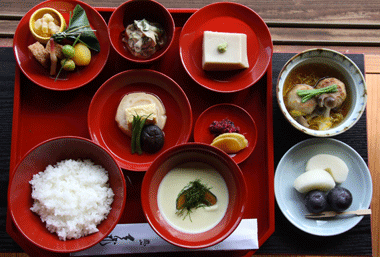
KYOTO
University City
Kyoto has 33 universities and 13 colleges. Kyoto University is the second oldest Japanese university and ranked third among top universities (2015).
One of Asia’s leading research-oriented institutions, Kyoto University, is famed for producing world-class researchers, including ten Nobel Prize laureates, two Fields medalists and one Gauss Prize.
Kyoto has 7,470 international students (2014), who want to study in Japan but feel overwhelmed by the size and pace of Tokyo, Kyoto offers the perfect balance of city life on a smaller scale, with plenty of opportunities to explore all aspects of Japanese culture!

Cultural & Historical Assets
There are literally 1,600 Buddhist temples and 400 Shinto shrines in Kyoto. It’s great fun to take in the breathtaking scenery for each season and view the beautiful architectural structures.
Kyoto's temples range from such world famous UNESCO World Heritage Sites such as Kinkakuji and Ginkakuji. Most of them contain the traditional gardens of the finest quality.
Like Buddhist temples, Shinto shrines are places of worship. Visitors can also experience the authentic traditional Japanese culture like the tea ceremony, flower arrangement, kimonos, and Geisha culture, which considers Kyoto as its birthplace. In addition, traditional industries have been developed in Kyoto, such as arts and traditional crafts. Many traditional artists still inherit this history, such as Kyo-butsudan (Buddhist altars), Kyo-butsugu (Buddhist paraphernalia), Kyo-shikki (Lacquerware), Kyo-sashimono (Wood crafts), Kyo-yaki and Kiyomizu-yaki (Ceramics), Kyo-sensu (Folding fans), and others.
Customs & Traditions
Kyoto has unique customs and traditions because it has a long history. Their unique customs include the following:
-
In Japan, when the baby is born, they take the baby to a temple after about 30 days. In Kyoto, they write a small red symbol on the foreheads of baby girls, which means a wish for the girl to become a sweet , thoughtful woman. On the other hand, they write a big red symbol on the forehead of baby boys, which means a wish for the boys to become strong, easygoing men.
-
In Kyoto , people never step on the threshold sill of the house because the sills are considered heads of people. Stepping on the sills means to step on people's heads and it is said that such a person who steps on people's heads can never be successful in life.
-
Brooms are considered to clean up evils. They believe that gods are invited to the house during New Year days, so they do not clean the house around that time because they do not want to send away gods.
-
Kyoto has many caterers' shops. It seems to be rude to treat guests with their home-made dishes.
-
On August 16th , they burn 5 mountains in the shapes of characters and pictures to see the souls of dead. It is said that if you drink something, such as water which reflects the symbol, you won't get sick.
-
In Kyoto, when guests are treated, and they leave a bit of the food, it expresses good manners for the host, signifying that they had enough food.
 |
|---|
 |
 |
 |
 |
 |
 |
 |
 |
 |
Kyoto was the kitchen of the Imperial Court for more than 700 years. Today, Kyoto remains the home of traditional Japanese cuisine, and there are many specialty eateries for sushi, tempura, soba, and ramen.
It was the efforts of Kyoto chefs that resulted in “Washoku,” or Japanese cuisine, being recognized as an intangible heritage by UNESCO in 2013. There is some characteristic of local food in Kyoto, which is included:
-
Yusoku Ryori: Yusoku Cuisine is ‘court food’ and was eaten by the Emperor and other high ranking nobles and aristocrats.
-
Kaiseki Ryori: Kaiseki Cuisine is ‘seasonal food’, which uses the fresh ingredients of the season and is cooked in ways that enhance the original taste of the ingredients.
-
Shojin Ryori: Shojin Cuisine is ‘temple food’, vegetarian food eaten by priests and monks.
-
Obanzai: Obanzai is ‘home food’, which is Kyoto style. It is vegetables-centered cuisine, and it varies according to the four seasons
Yatsuhashi is Kyoto’s quintessential sweet and a sightseeing souvenir representing Kyoto. When visiting Kyoto, most people pick up some yatsuhashi as souvenirs. The dough of the sweet has cinnamon taste with red bean paste and is shaped into a triangle.
Local Delicacies & Souvenirs





Street ''Goban-no-me''
The Kyoto street comes from Chinese cityscape. Kyoto is laid out in a grid pattern, with streets running north and south, east and west.
In Japanese, this grid pattern, is called "Goban-no-me". Go is a game played with white stones and black stones on a board that looks like this. The city of Kyoto is laid out looking like this board.
This grid pattern was actually laid out in the Heian period, more than a thousand years ago. It is easier to arrange streets neatly, and citizens don’t lose their way. The emperor did this to help the people. It prevented people from expanding their properties freely. In fact, the streets of Kyoto are still straight, and the width of the streets is narrow, but equal, which prevents people from losing the way.
